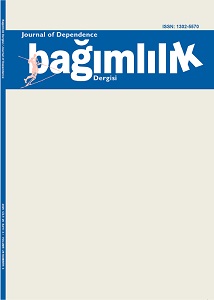Use of a smartphone application as a treatment and follow-up for tobacco use disorder: a case report
Keywords:
Healthcare software, Tobacco Use Disorder, harm reductionAbstract
Objective: The objective of this study is to investigate the effect of a smartphone health application in a tobacco use disorder case.
Method: SmokeBeat smartphone application was used in conjunction with a smartwatch. A tobacco use disorder case used the application for five months. Additionally, the case was evaluated with Fagerstrom Test for Nicotine Dependence (FTND), Autonomy Over Tobacco Scale (AUTOS) and Carbon Monoxide levels in breath initially and finally.
Results: The analysis shows that after using the application for five months, daily number of cigarettes, CO levels and dependency scores were on the decline.
Conclusion: This case is an important example for using a smartphone application in order to reduce the number of cigarettes, supporting smoking cessation and behavioral change. It is thought to be useful for cases who are not suitable for pharmacotheraphy or without motivation.
References
Jha P, Peto R. Global effects of smoking, of quitting, and of taxing tobacco. New England Journal of Medicine 2014; 370:60-68.
Centers for Disease Control and Prevention (CDC). Vital signs: current cigarette smoking among adults aged ≥18 years--United States, 2005-2010. MMWR Morb Mortal Wkly Rep 2011 Sep 9; 60: 1207-12.
Piper ME, Federmen EB, McCarthy DE, et al. Using mediational models to explore the nature of tobacco motivation and tobacco treatment effects. J Abnorm Psychol 2008; 117: 94–105.
Law M, Tang JL. An analysis of the effectiveness of interventions intended to help people stop smoking. Arch Intern Med.1995;155:1933–1941.
Garrison KA, Pal P, Rojiani R, et al. A randomized controlled trial of smartphone-based mindfulness training for smoking cessation: a study protocol. BMC psychiatry 2015; 15: 83.
Griffiths F, Lindenmeyer A, Powell J, et al. Why are health care interventions delivered over the Internet? A systematic review of the published literature. J Med Internet Res 2006; 8: 10.
Etter JF. The Internet and the industrial revolution in smoking cessation counselling. Drug Alcohol Rev 2006; 25: 79–84.
Abroms LC, Lee Westmaas J, Bontemps-Jones J, et al. A content analysis of popular smartphone apps for smoking cessation. Am J Prev Med 2013; 45: 732–736.
Bowen S, Witkiewitz K, Clifasefi SL, et al. Relative efficacy of mindfulness-based relapse prevention, standard relapse prevention, and treatment as usual for substance use disorders: a randomized clinical trial. JAMA psychiatry 2014; 71: 547-556.
Dar R, Vilardaga R, Garrison K. Development and Testing of Smartphone Apps for Smoking Cessation. SRNT 23rd Annual Meeting Abstract Book, 2017: 16.
Uysal MA, Kadakal F, Karşidağ C, et al. Fagerstrom test for nicotine dependence: reliability in a Turkish sample and factor analysis. Tuberk Toraks 2004; 52: 115-21.
Yararbaş G, Akyel B, Pöğün Ş. Tütün bağımlılığının değerlendirilmesinde yeni bir yaklaşım. Bağımlılık Dergisi, 9. Ulusal Alkol ve Madde Bağımlılığı Kongresi Ek Sayısı, Poster Bildiriler Cilt 16, 2015: 49.
BinDhim NF, McGeechan K, Trevena L. Assessing the effect of an interactive decision-aid smartphone smoking cessation application (app) on quit rates: a double-blind automated randomised control trial protocol. BMJ open 2014; 4: e005371.
Fiore MC, Jaen CR, Baker TB, et al. Treating tobacco use and dependence: 2008 update US Public Health Service Clinical Practice Guideline executive summary. Respiratory care 2008; 53: 1217-1222.
McClure JB, Hartzler AL, Catz SL. Design considerations for smoking cessation apps: feedback from nicotine dependence treatment providers and smokers. JMIR mHealth and uHealth 2016; 4: e17.
Sağlık Bakanlığı. Küresel Yetişkin Tütün Araştırması Türkiye 2012; 948: Ankara 2014: 58-60.
Downloads
Published
Issue
Section
License
Copyright (c) 2025 Journal of Dependence

This work is licensed under a Creative Commons Attribution-NonCommercial-NoDerivatives 4.0 International License.
The Journal and content of this website is licensed under the terms of the Creative Commons Attribution-NonCommercial-NoDerivatives 4.0 International (CC BY-NC-ND 4.0) License. This is in accordance with the Budapest Open Access Initiative (BOAI) definition of open access. The Creative Commons Attribution-NonCommercial-NoDerivatives 4.0 International (CC BY-NC-ND 4.0) allows users to copy, distribute and transmit unmodified article, and make noncommercial use of the article. The CC BY license permits non-commercial re-use of an open access article, as long as the author is properly attributed.

